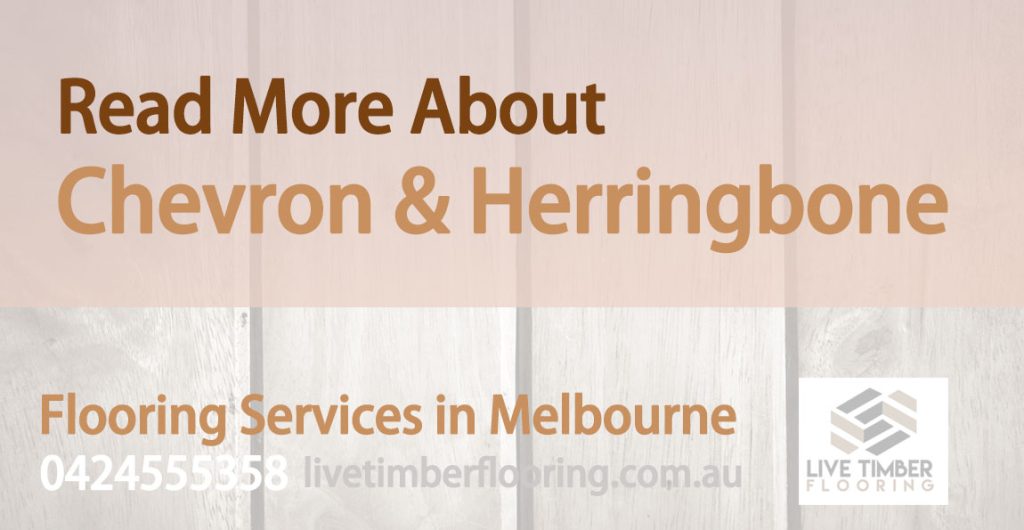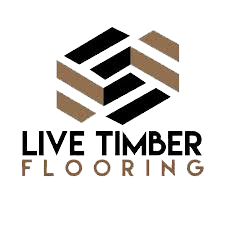
The herringbone pattern is first used by Romans for the road pavement. They discovered that if the bricks are positioned in the direction of traffic, roads are more stable. The pattern is also used in interior design from ancient times to middle ages. However, it was only in the 16th century that the design appeared in the floors. One of the earliest examples is herringbone arrangement used in the wood flooring in the Francois 1 Gallery at the Chateau de Fontainebleau, installed in 1539. The Flooring was designed and installed by an Italian artist which immediately became popular all over Western Europe. Until the late 18th century, patterned wood floors could be found everywhere in castles, palaces, and nobility/wealthy houses. For instance, the Palace of Versailles had only one room covered with chevron flooring. Parquetry first installed in England in the 17th century. Queen Henrietta Marie, who married Charles, hired a French craftsman called Inigo Jones for reconstruction of her official residence, Somerset House. He designed and installed a wooden pattern floor for the Royal Family. The popularity of chevron and herringbone wood flooring has reached a fevered pitch in the 18th and 19th century especially during the Haussmann era in Paris, when the majority of the city was rebuilt. In this period, Parquet flooring was laid down in many new apartments giving them an impeccable look. However, the demand for hardwood floors was dramatically decreased after WWII due to the advent of cheap carpets and synthetic fibers. It didn’t last too much that wooden floors were totally back in trends in the 1990s. Nowadays, chevron and herringbone flooring are considered modern and trendy. The natural look of the wood fits into any contemporary or traditional design enhancing the visual appearance of the space. Chevron Hardwood floor Chevron flooring is gaining popularity day by day. If you prefer a vintage Parisian or European feel in the spaces chevron pattern is the right choice for you. It is very versatile and is manufactured in a variety of colors and tones. In addition, chevron hardwood floors resemble natural or engineered hardwood. If you want the floor looks like the natural wood flooring using light finishes leads to the best solution. You can also give the room a fancy effect by using a multi-tone natural wood or altering the shade and color of rows or columns. Mixed color floors are very popular nowadays. A chevron flooring looks most elegant when used against solid patterns such as monotonic walls and décor. The best result achieved when it was installed where the rest of décor is not too bold. For instance, the natural pattern of chevron flooring is highlighted when is set against traditional horizontal and vertical lines. It can be also used in transitional spaces like hallways or to draw attention to special areas like a fireplace. Avoid using too many chevron patterns as it makes the room appear too busy. Pros: • Create a luxurious European view with lines standing out • Enhance the visual interest by means of diagonal lines • Induce a movement feeling through arrows created where the boards meet • The result is gorgeous even when less expensive wood bread are used • Look modern, fashionable and classic • Less expensive and easier to install than herringbone parquetry Cones: • Usually a custom-made flooring • Must be designed and scaled according to the size of the room, otherwise, the visual effect could be impaired. Herringbone Hardwood floor The herringbone pattern consists of a rectangular pattern resembling the bone structure of the herring fish. It was utilized to create beautiful patterns in history from roads to jewelry. Application of herringbone design was even observed during the study of the Ancient Egyptian. However, using the herringbone pattern did not become ubiquitous in hardwood floors until much later. The herringbone pattern is suited for a homeowner who wants a more classic, traditional look in their spaces. It creates a broken zig zag pattern adding to the visual interest of the room. You have a vast variety of wood species to choose from. Each hardwood material has unique color and shading which broadens the options at your disposal. Some common high-quality hardwood types that are appropriate for herringbone floors include: Walnut, Hickory/Pecan, White Oak, Sapele, Red Oak, and Maple. These wood materials are durable and stable for decades and require minimum maintenance. You can also combine different hardwood types to maximize the aesthetic value of the herringbone floor. Using a contrasting color or pattern gives the flooring a personal touch and makes it look distinctive. However, if you want to pay tribute to tradition, single material herringbone floor is the best option for you. In addition, you can add modern touches to your floor by highlighting the wood grains by staining it or covering the whole surface. If you prefer to highlight grains of wood, you can brighten the surface using a tinted stain. Otherwise, use a darker stain to hide woodgrain and resemble some hard to maintain materials such as stone. You can design and implement your herringbone flooring in any shape, type, and pattern. The only limitation is your imagination. In the following diagram three common arrangements of herringbone hardwood floor including single, double and diagonal patterns are depicted: Pros: • Require less wood(Right angle cuts means less wood waste) • Create a more sophisticated look than chevron. • Enhance the visual effect without being distracting. • Is deemed to be more classic or traditional than chevron pattern Cons: • Does not induce the illusion of length • Installation is more difficult due to mitering • Usually special custom-made flooring Both Chevron and herringbone parquetry are the best alternatives for traditional straight hardwood floors. They give you a wide variety of options to suit every taste. They are compatible with most materials and colors making the flooring pop easily. Both of them are magnificent patterns and create astonishing floor designs. They are more suited for large spaces rather than small rooms. Now it is up to you to choose between more traditional design and a fashionable and modern pattern. References: 1- https://www.europeanflooring.ca/which-is-right-chevron-hardwood-floors-vs-herringbone-hardwood-floors/ 2- https://www.czarfloors.com/herringbone-wood-floor.asp 3- https://saroyanhardwoods.com/herringbone-hardwood-floor-origins-materials-and-modern-designs/ 4- https://www.woodandbeyond.com/blog/when-to-choose-chevron-over-herringbone-flooring/ 5- https://www.creativewallcoverings.com/difference-between-herringbone-and-chevron-parquetry-flooring/ 6- https://www.creativewallcoverings.com/difference-between-herringbone-and-chevron-parquetry-flooring/ 7- https://www.bestlaminate.com/blog/floor-inspiration-chevron-pattern-flooring-make-room-pop/

